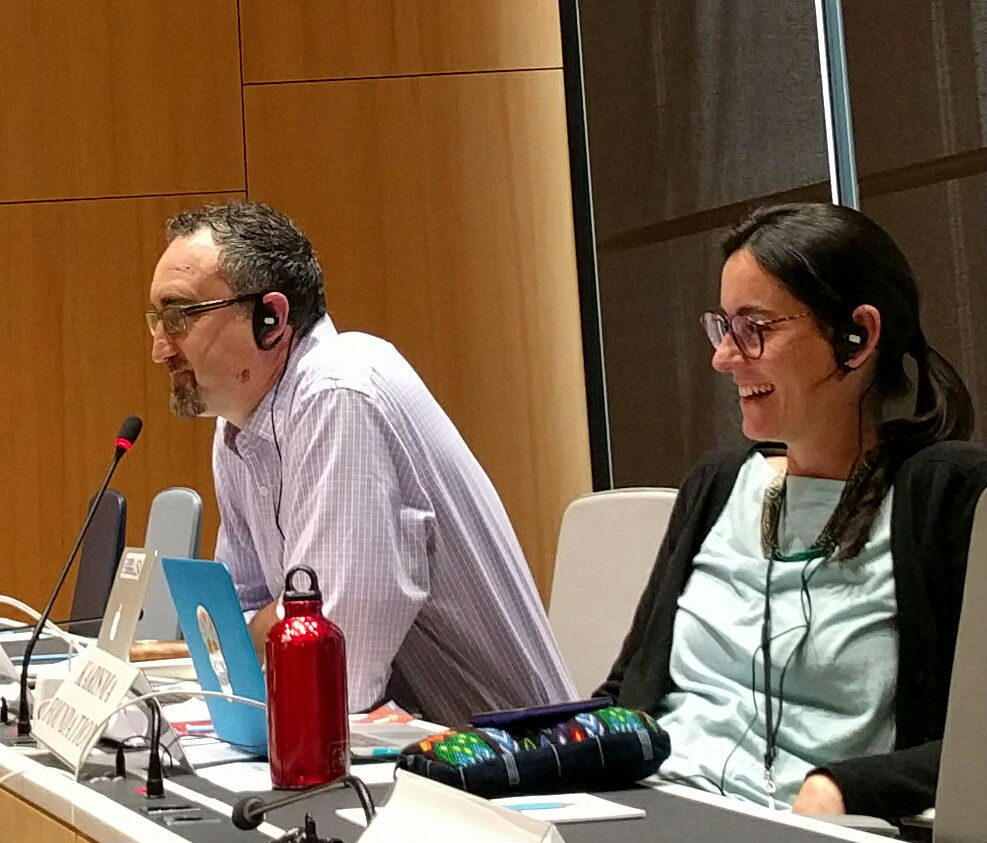
Speaking on behalf of the American University programme on information justice and Intellectual Property. And I speak as an educator myself and also on behalf of a larger network that I coordinate called the global expert network on user rights which is a network of educators.Maybe just to start with a short analogy or description of some of the problems from my own experience, which is although I teach in a northern school now in Washington, D.C., I also spent some time teaching in a major university in South Africa where the context of access to educational materials is very different. When I taught a class there of 70 students in an advanced constitutional class, only about five or six of the students could purchase the learning materials, the textbooks we were using for that class. The rest of them after each day would huddle in the library and attempt to share and read the copies that were on reserve in that space. And that’s the reality around much of the world where text books are priced similarly in poor countries and rich countries, but because of the disparities in income, students in poor countries cannot afford their learning texts.My experience was long before the advent of the Internet. And so rep row graphic copies were really the only way students were accessing their materials and it was very hard to find students who had done their full reading. The advent of Internet technology and digital duplication provides the opportunities for overcoming some of these barriers, but they can only be embraced in a Copyright system that has adequate flexibilities to deal with these interests.
I think looking at Professor Sang’s study, it shows the great breaths and uses that educational exceptions and limitations around the world serve. Through his studies you can see that they often apply to all rights, not just reproduction. All kinds of works, not just literary works; all kinds of uses, including digital uses, not just analog uses; and all kinds of educational purposes, not just, for instance, teaching in the four walls of the classroom itself. This kind of openness, the openness to the various uses and works and rights and purposes is really likely the key to embrace the kind of advanced technologies that are development-level fining the modern educational classroom.
But we don’t find this openness in all of the laws. Professor sing finds that 16 laws minority, but an important limit it to a single copy. It’s difficult to match such exceptions to the reality of modern course ware that provides access to learning materials for much more people. Only 23 laws around the country address TPMs which can be critical to providing access to all kinds of materials within the classroom.
To the point that all uses should be remunerated, it is useful to recall the U.S. intervention yesterday that exceptions and limitations foster social, not just economic purposes. And Professor Sang’s study shows that very few limitations, educational limitations and exceptions actually require remuneration. So that’s a minority view within countries today.
Speaking about the furtherance of the study that’s undergoing as it’s completed from a researcher’s perspective, it would be of important value to know the relationship between more permissive and open Copyright systems, particularly within the educational exceptions and limitations as studied by professor sing and the availability and use of teaching materials and modern teaching technologies for learning. And towards this, it would be extremely useful if the study included the dates on which the various exceptions were adopted that appear in the study so that researchers like me could look at the impact of those changes over time. Does the changing of Copyright law in a particular country to make it more open lead to or permit the greater use of technologies within
that actual country?And it would also be very valuable to have the data from the survey in a spreadsheet or other kind of manipulatable format so that researchers like me could test the data against other impacts and information.
And with this information, I will thank the committee for its work in this area and express my interest in supporting both the committee and any members that desire it within this area.
>> CHAIR: Well, thanks. And I’d like to clarify to the representative of American University Washington of the programme information justice and Intellectual Property for his thoughtful intervention. We take note of the elements you have mentioned. And it’s interesting to receive these contributions from the Academy.